Kerikeri history & culture
Kerikeri, the Bay of Islands and Hokianga Harbour are a treasure trove of history and culture. While you're exploring the region you'll learn about the battles, settlements, mission stations and alliances of old, as well as the wonderfully creative painters, potters and growers of today.
Explore Kororipo Heritage Park, Kerikeri
Kororipo Heritage Park is a short distance from Kerikeri village, where the Kerikeri River forms a large pool or basin beneath a wide waterfall. With easy water access inland and out to the open sea, this was a natural trade route long before the arrival of Europeans.
Above the basin is the site of Kororipo Pā where the well-known and feared Ngāpuhi chief Hongi Hika was based. Highly skilled in war and trade, and keen to access European technology and trade, he welcomed early missionaries and traders. He even sailed to England in 1820, met King George IV and was given a suit of armour and some guns. Returning via Australia, he acquired hundreds of additional guns and waged terrible war on North Island tribes. Today you can walk in Hongi Hika's footsteps as you explore the still-terraced land where the pā once stood.
The 1819 mission station at Kororipo led to the building of Kemp House in 1821-22 and the Stone Store in 1832. Both are surviving symbols of the early connection between Māori and European people. Built under the protection of local chiefs, the early missionary settlement helped forge enduring bonds between the two cultures. This led to mutual learning, trust, the translation of both languages and, eventually, the Treaty of Waitangi.
The Stone Store Kerikeri is open for visitors to explore and there's a museum on the upper floor. Regular guided tours of Kemp House provide fascinating insights into early colonial life and the skill of the Māori and European carpenters that built it.
There's a restaurant and casual cosy café within the park. The restaurant stands beside a 200-year-old pear tree planted by the missionary Samuel Marsden and serves brunch, lunch and dinner in a beautiful setting. The café has seating inside and outdoors on a veranda with views across the lawn to the river.
From the café, a foot bridge crosses the river to the eastern bank and the main car park. From here you can pay to visit Te Ahurea, an interactive pā and unique cultural experience.
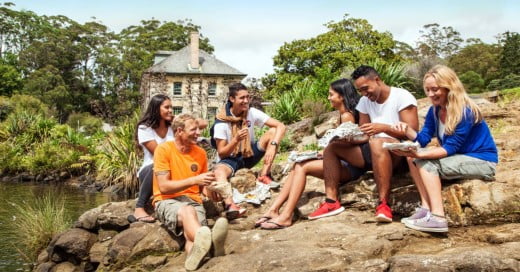
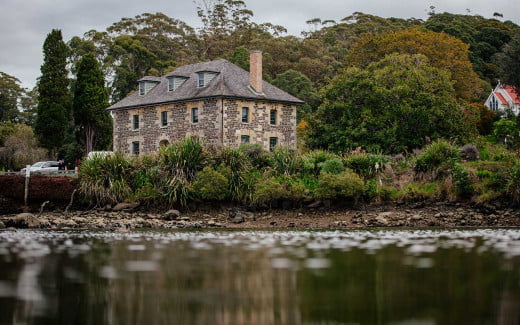
Experience the creativity of Kerikeri art
The Kerikeri art gallery scene is alive and well. It's an area that has attracted creative people for generations and there's no shortage of galleries and studios to discover. KOAST, the Kerikeri Open Art Studios Trail, is held over Labour Weekend in October each year and offers the chance to meet more than 75 artists.
Favourite local galleries in and around Kerikeri village include the Little Black Gallery, Art at Wharepuke, and The Art Glass Studio. Some of the smaller galleries have limited opening hours, so it pays to call ahead to avoid disappointment.
If you enjoy colourful ceramics, check out the Keriblue Ceramics factory. You can watch the artists in action and buy your favourite items at special prices from their onsite gift gallery. Keriblue is also home to Get Fudged fudge products. After watching this wonderfully decadent fudge being made and tasting some of the delicious flavours, you can relax over a coffee and a piece of your favourite Get Fudged flavour.
Visit the Waitangi Treaty Grounds
Waitangi Treaty Grounds is a must-visit New Zealand attraction and our most important historical site. With a day you'll enjoy a guided tour, experience a breath-taking Māori cultural performance and visit two contemporary museums. The highly-regarded Te Kōngahu Museum of Waitangi brings the stories of Waitangi and early New Zealand to life through ancient taonga (treasures), multi-media experiences and world-class exhibitions whileTe Rau Aroha, the newest museum on the grounds, tells of the Māori commitment to the armed forces and the sacrifices made serving their country during times of war.
As you explore the park-like Waitangi grounds, with their sweeping sea views, you'll encounter fine examples of Māori carving in the form of an ornate meeting house and the world's largest ceremonial war canoe. To represent the partnership between Māori and European cultures, the 1940 meeting house faces the colonial home of James Busby, built just over a hundred years earlier.
Now known as the Treaty House, Busby's home was where he carried out much of his work as the British government's representative from 1833 to 1840. Today the Waitangi Treaty House is open to the public with some rooms furnished as they would have originally been and others housing informative displays.
A 34m high flagstaff marks the place where Māori chiefs first signed the Te Tiriti o Waitangi, the Treaty of Waitangi, on 6 February 1840. It's a powerful and thought-provoking experience to stand on the same spot, imagine the crowds that were present and consider the enormity of what took place on that important day.
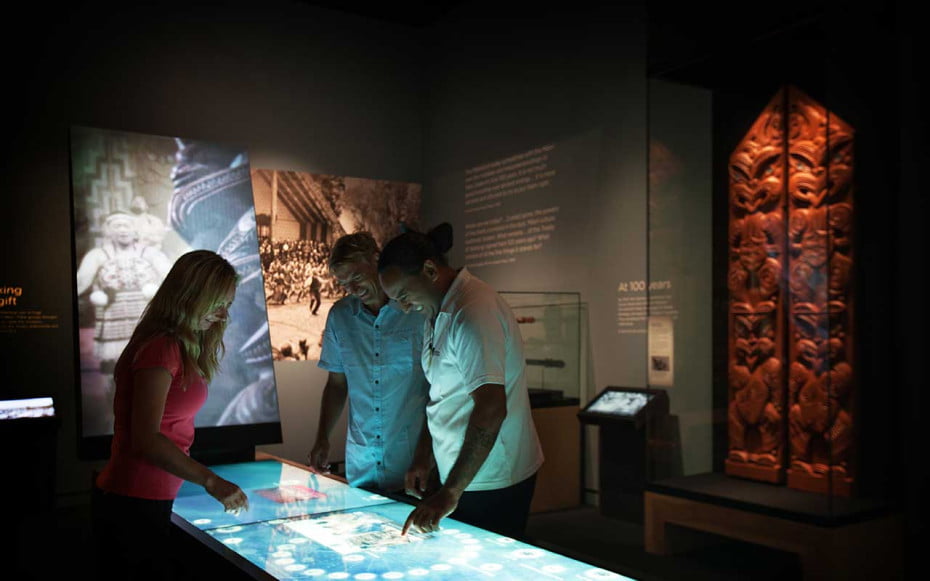
Catch the ferry to historic Russell
Across the harbour from Waitangi and Paihia is the historic settlement of Russell, which was originally called Kororāreka. It was once a lawless port full of drunken whalers, ruthless traders and brothels (it was known as 'the hell hole of the Pacific'). After the signing of the Treaty of Waitangi in 1840, law and order gained a hold and an elegant town emerged. For a brief time Russell was New Zealand's capital.
As you walk up the ferry wharf towards the town, your eye will be drawn to the magnificent colonial architecture of the Duke of Marlborough Hotel. Many other historic buildings are now home to small cafés, restaurants, boutiques and shops.
The small Russell Museum is a great place to start your journey back in time and learn about the town's fascinating history. Russell's historical highlights include Pompallier House, and Christ Church. Built in 1841, Pompallier House is New Zealand's oldest surviving Roman Catholic mission building. It originally included a printery that produced tens of thousands of books written in Māori. Christ Church, complete with musket ball holes in the walls, is the oldest church in New Zealand. The well-kept graveyard has many stories to tell.
A walk up Flagstaff Hill is rewarded with spectacular views and the chance to stand where Māori chief Hone Heke cut down the British flagpole four times.
Russell Mini Tours offers an excellent way to see more of the sights of Russell with an hour-long mini van tour.
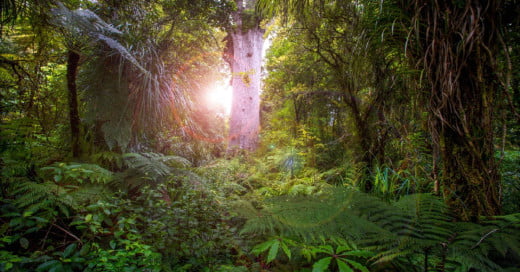
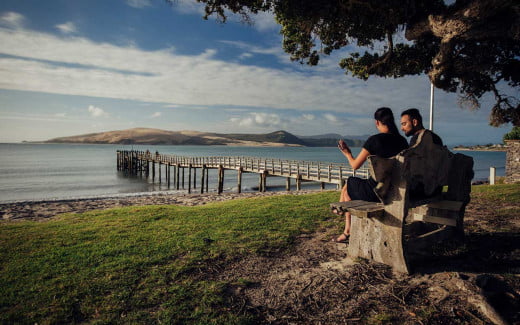
Feel the history at Hokianga Harbour
Archaeologists and oral traditions suggest the Hokianga Harbour on Northland's west coast was settled by the legendary Polynesian navigator Kupe in around 925AD. He eventually sailed back across the Pacific to his homeland, Hawaiki, but his grandson led a return journey to settle in Hokianga.
Soon after arriving in the Bay of Islands, European missionaries crossed to the Hokianga Harbour. Samuel Marsden planted the first grapes in Hokianga in 1819 and in the 1830s Archbishop Pompallier gave the first Catholic mass on the north side of the harbour. European ships were crossing the harbour's treacherous bar to harvest native forest as early as 1822.
In 1828, a mission station was established at Māngungu, near Horeke. More chiefs signed the Treaty of Waitangi at Māngungu in 1840 than at the first signing in Waitangi. Today, Horeke is at the end of the Twin Coast Cycleway and there's an 1838 house at Māngungu that's open to visitors.
In Rawene, where the car ferry crosses to Kohukohu, you can visit Clendon House. Completed in 1869, it was the home of early trader, politician and magistrate Captain James Clendon. After his first wife died, he married a local Māori woman. When Clendon died in 1872, she had to cope with debts and raising children on her own. You can hear her story and learn about early interaction between the two cultures by visiting Clendon House.
Māori culture and traditions are still strong in the Hokianga. Local Māori guides at Footprints Waipoua offer highly-rated tours and walks into the Waipoua Forest. Here you will see some of the largest kauri trees in New Zealand, including Tane Mahuta, Lord of the Forest. You'll also learn more about the historical significance of the forest to Māori.
Descendants of the great Polynesian explorer Kupe also tell the story of Kupe's journey to Aotearoa and delve into te ao Māori, the Māori world, sharing stories through carvings, performance and the natural environment at Manea Footprints of Kupe.
Time seems to run a little slower in the Hokianga. There's a deep respect for the past, a welcoming sense of community and the landscapes have an almost spiritual feel.